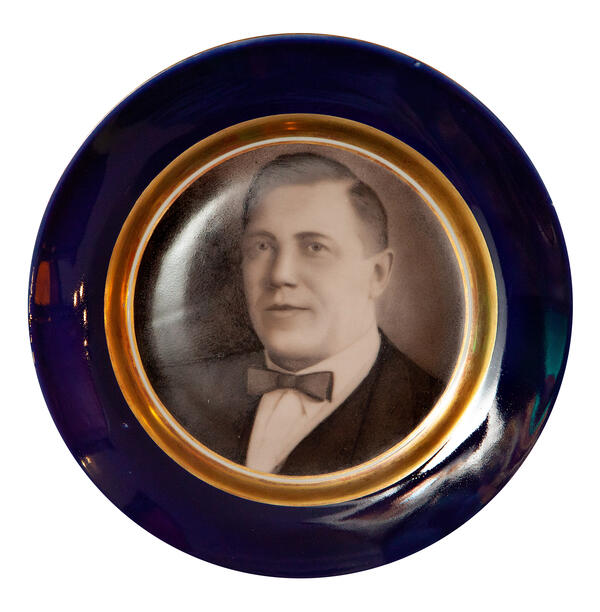The Nikolai Golovanov Apartment Museum gives the opportunity to not only see how the famous conductor lived, but also experience the atmosphere that once surrounded the musician. The maestro’s apartment was the place that was constantly filled with sounds of music and where new ideas came to the outstanding conductor and his creative plans and new opera productions took shape.
It is known that the musician placed things in the apartment by himself: he hung pictures, installed electric light bulbs to provide some additional illumination for them, attached bronze decorations to the doors, and arranged wonderful, unique works of art that he had collected. Among other memorial items, the museum also houses a plate with a portrait of Nikolai Golovanov. The faience plate was created at the Lomonosov Leningrad Porcelain Factory.
The factory was founded in 1744 by Empress Elizabeth Petrovna, the daughter of Peter the Great. The late 18th century witnessed the heyday of Russian porcelain, and the Imperial Factory became one of the leading plants in Europe. In 1800, the company opened a factory store in Saint Petersburg and started delivering products to Moscow. In the mid-19th century, the factory was renamed the Imperial Porcelain Factory. After the Russian Revolution of 1917, when the Bolsheviks came to power, the plant was nationalized, renamed the State Porcelain Factory and passed under the control of the People’s Commissariat for Education. The factory staff received a task to create a “testing ceramic laboratory of national significance”, which would produce “propaganda porcelain”.
The products of the porcelain factory were made with such great artistic skill that by the early post-revolutionary years they were already exhibited abroad. In 1925, the exhibits received a gold medal at the International Exhibition in Paris, and some of the artists were awarded silver medals. Then, in 1925, to commemorate the 200th anniversary of the Russian Academy of Sciences, the plant was renamed after the founder of the Academy — Mikhail Vasilyevich Lomonosov.
It is known that the musician placed things in the apartment by himself: he hung pictures, installed electric light bulbs to provide some additional illumination for them, attached bronze decorations to the doors, and arranged wonderful, unique works of art that he had collected. Among other memorial items, the museum also houses a plate with a portrait of Nikolai Golovanov. The faience plate was created at the Lomonosov Leningrad Porcelain Factory.
The factory was founded in 1744 by Empress Elizabeth Petrovna, the daughter of Peter the Great. The late 18th century witnessed the heyday of Russian porcelain, and the Imperial Factory became one of the leading plants in Europe. In 1800, the company opened a factory store in Saint Petersburg and started delivering products to Moscow. In the mid-19th century, the factory was renamed the Imperial Porcelain Factory. After the Russian Revolution of 1917, when the Bolsheviks came to power, the plant was nationalized, renamed the State Porcelain Factory and passed under the control of the People’s Commissariat for Education. The factory staff received a task to create a “testing ceramic laboratory of national significance”, which would produce “propaganda porcelain”.
The products of the porcelain factory were made with such great artistic skill that by the early post-revolutionary years they were already exhibited abroad. In 1925, the exhibits received a gold medal at the International Exhibition in Paris, and some of the artists were awarded silver medals. Then, in 1925, to commemorate the 200th anniversary of the Russian Academy of Sciences, the plant was renamed after the founder of the Academy — Mikhail Vasilyevich Lomonosov.


